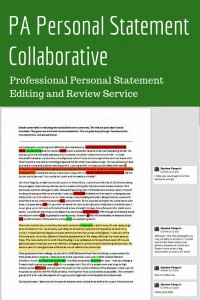Do physician assistants get sued?
Of course, they do, but based on seventeen years of data from the National Practitioner Data Bank, nationwide physician assistant malpractice demonstrates lower malpractice incidence and average payment amounts compared to MDs and advance practice nurses!
Can I get a Whoot Whoot for PAs!
PA Malpractice Incidence
There is one malpractice payment for every 32.5 PAs while there was one for every 2.7 physicians. That is, the composite payment rate for physicians was twelve times that of PAs over the full study period.
Average Malpractice Payment Amount
PA average and median payments for malpractice lawsuits were less than that of physicians and advanced practice nurses (APNs).
- The average and median APN payments were the highest at $350,540 and $190,898.
- The average and median physician payments were $301,150 and $150,821
- The average and median PA payments were $173,128 and $80,003.
The physician adjusted mean payment was 1.74 times higher than PAs but only 0.86 that of APNs. The physician adjusted median payments were 1.89 times that of PAs but only 0.79 that of APNs.
Why are advanced practice nurse malpractice rates higher? Are they reckless practitioners?
It is speculated that advanced practice nurse median payments are higher than that of physicians and PAs because the proportion of APNs who work in the high-risk specialties of anesthesia and obstetrics is higher.
The proportion of malpractice payments for nurse anesthetists (47%) and nurse midwives (25%) was 72% of total APN payments.
Reasons for Disciplinary Action
The most common reason for disciplinary action by state and federal monitoring bodies was the same for all three provider types.
The most common disciplinary action was a licensing action (suspension or termination of license) by licensing authorities and the most common reasons for the licensing action were for unethical conduct and alcohol/substance abuse.
Top Reasons for PA Malpractice Claims
The most common reasons for Advanced Practice Nurse malpractice claims were for obstetric and anesthesia errors. This is due to the disproportionate number of APNs who practice in these specialties compared to physicians and PAs.
If these are excluded, the top-ranking reasons for malpractice payments were the same for PAs and APNs. In order, they are:
- Errors in diagnosis
- Errors in treatment
- Medication errors
- Surgical errors
For physicians, they were in order errors in diagnosis, surgery, treatment, obstetrics, and medication.
What can PAs can do to avoid medical malpractice?
The following is an excerpt from the book Becoming A Physician Assistant by Jody Tomic PA-C. Download it for free on Kindle Unlimited:
How PAs Can Avoid Malpractice
Many lawsuits against PAs and their supervising physicians cite the failure of the PA to contact the physician.
The PA may fail to recognize the significance of a finding on the history and physical examination and not see the need for contact. Comprehensive protocols, as well as ongoing education, can help minimize this risk.
A physician assistant may be apprehensive about disturbing their supervising physician with frequent questions. Both the supervising physician and the PA must cultivate a collaborative relationship, so the PA feels comfortable asking any questions necessary to provide excellent patient care and safety.
The PA should always have reliable contact information for the supervising physician.
A preceptor of mine told me about a PA who was monitoring a man hospitalized with the flu. The man complained that he was having trouble breathing, and the PA was afraid to bother her supervising physician at home. It turned out that the man had developed Guillain-Barre Syndrome. GBS often follows a minor illness, such as a lung infection or gastrointestinal infection. Most of the time, signs of the infection have disappeared before the symptoms of GBS begin. It can result in ascending paralysis that may affect the diaphragm, requiring breathing assistance. The patient died, and the PA and physician were sued.
Obviously, the physician should encourage communication from his/her PA because he is liable for their errors. The PA should realize that he or she can also be sued. So, even if the doctor is testy about being called, do it anyway.
If communication with your supervising physician is bad, you should take steps to remedy the situation, including finding a new job. Patients’ lives depend on your communication and teamwork.
Most of the time, doctors cover iPAs under their malpractice insurance. You should definitely have a dialogue to confirm this.
The question also arises whether mid-level practitioners should obtain their own malpractice insurance. When the employer is your only insurer, your best interest may not be your employer's best interest.
With personal malpractice coverage, you have an attorney who represents you, not your employer. Some basic types of malpractice insurance are “Claims Made” and “Occurrence.”
Claims Made insurance covers you for incidents that occur during the term of the insurance, only if they are reported during the coverage period. Occurrence coverage covers you for incidents that occur during the coverage period, regardless of when they are reported. So if a patient sues you one year after the incident occurred and your Claims Made policy has lapsed, you will not be covered. You might want to discuss this with your employer. It’s a good idea to take some continuing education courses on risk management.
Good documentation, excellent communication, and detailed protocols for emergency situations are all important ways to avoid exposure.
Finally, if you feel uncomfortable performing a procedure or prescribing a medication, listen to your intuition and get help. If you aren’t sure about anything, ask. The only stupid question is the one that isn’t asked.
How to Get More Information on PA Malpractice Insurance
I often receive emails from PA school graduates and practicing PAs regarding malpractice insurance and supplemental coverage.
Personally, I have never purchased additional coverage above that provided by my employer. But there are times where you may need to purchase your own plan, or you may want to speak with someone to see if the coverage you have is enough.
The AAPA has a resource page and has partnered with an insurance vendor. This may be an excellent place to start.
At a minimum, make sure you have a hard copy of your insurance policy, understand your coverage levels, and keep this copy in a safe place. If you have been at an institution for a while, call HR or speak with the office manager and make sure your policy is active and up-to-date. I worked for a year without coverage once and had no idea!
Take-home point: Don't rely on office managers to protect your future and that of your loved ones!
References:
- Expert pages: Physician Assistant Malpractice History
















What year was this post originally posted? I’m just looking for the most up to date stats on malpractice claims against PAs! Any suggestions where I might find this info?? Thanks! -Suzanne
How would you advise someone in choosing how much coverage to get. Obviously the more coverage the safer you are, but that comes at a cost. Any advice on this point would be much appreciated.
Hi Vanessa, I have always received coverage through my employer which has been in the range of $2 million per claim (or so the policy says). I have always just requested a copy of my coverage policy to make sure it actually exists (believe it or not one time they had forgotten to submit the paperwork) and I file it away with my important employment documents. I probably should do more research on this topic but I have always just figured “well, I’m covered so I must be alright.” But the truth (as you probably know) is that you usually don’t realize how underinsurred you actually are until a claim is filed and you realized you weren’t as well covered as you thought you were. Since I have never had to actually purchase coverage myself I am not sure I am the best person to ask on this topic. The AAPA has a page covering the topic including links on where to buy coverage and “tail coverage” recommendations here: https://www.aapa.org/career-central/practice-tools/malpractice-insurance-basics/
The AAPA also partners with this insurance group which has a lot of good information on their site as well as contacts: https://www.cmfgroup.com/professional-liability-insurance/physician-assistant-insurance/
You will have to get back to me and let me know what you decided to do.
Stephen
Stephen,
What books or other sources on the topic of medical malpractice, negligence, and risk management would you recommend for PA students and new PA grads to review? These topics are not covered in great depth in PA school and I think it’s always good to be informed. Thanks for your advice and your content. 🙂
Hi Ashley, this is a wonderful question. Honestly, it’s something I haven’t spent a lot of time researching. The only thing I learned early on was to always ask for a copy of my malpractice insurance from my employer. You would be surprised how often this is overlooked and you want to make sure #1 you are actually covered and #2 what your coverage limits are. I realized that I hadn’t been covered for two years at a previous employer because the hospital I was working for at the time had not correctly submitted the paperwork! Wow! As far as what are the best coverage limits? Whether or not you need “tail” or “nose” coverage? I will have to do some more research myself. It’s something I certainly need to spend some more time on because as you know, it’s important, and you realize how important it is the day you are involved in a lawsuit (which hopefully never happens). The physician assistant forum https://www.physicianassistantforum.com/search/?q=malpractice and the AAPA website are a good place to start your research: https://www.aapa.org/career-central/practice-tools/malpractice-insurance-basics/
You will also want to research laws in your state: https://www.thepalife.com/state-chapters/
Let me know if you find any good information. If you do some research and learn something worth sharing let me know and we can pen a new article together on the topic.
Stephen
The attorneys have no medical education or experience in treating patients yet they
convince juries who likewise do not know anything about the subject to make
decisions which have no basis or veracity. The yearly increase in malpractice premiums to doctors and hospitals is THE CAUSE for thr high cost of medical care in the U.S. Doctors call it the GREENBACK poultice effect as the monetary award makes all the terrible symptoms disappear.. Decision should be made by a panel of MDs who are specialists in the appropriate medical field. Why are there No
medical malpractice suits in the MILITARY?? etc. etc.
.
These are very good points, Floyd. Like the rising costs of healthcare in general Malpractice lawsuits are a huge piece of the puzzle.
Stephen
Military malpractice is not a valid argument for this particular case as military members cannot sue military medical practitioners. It is the closest thing America has to social medicine and should be used as a reason not to socialize medicine in America. While the medical practitioners are good, they lack training and patient diversity. They are also not motivated to do their absolute best and consequently do not always provide top notch treatment. I do not mean to discredit the military docs, nurses, or PAs but it is the truth. Money is a motivator and to get the money you have to be at the top of your game which military medical practitioners are typically not. I agree with your argument that there needs to be reform of how medical malpractice is handled to include consequences for those who propose the suits as well as the lawyers who ambulance chase. Reform should also include adequate protection for the practitioners because they are the ones really laying everything on the line.